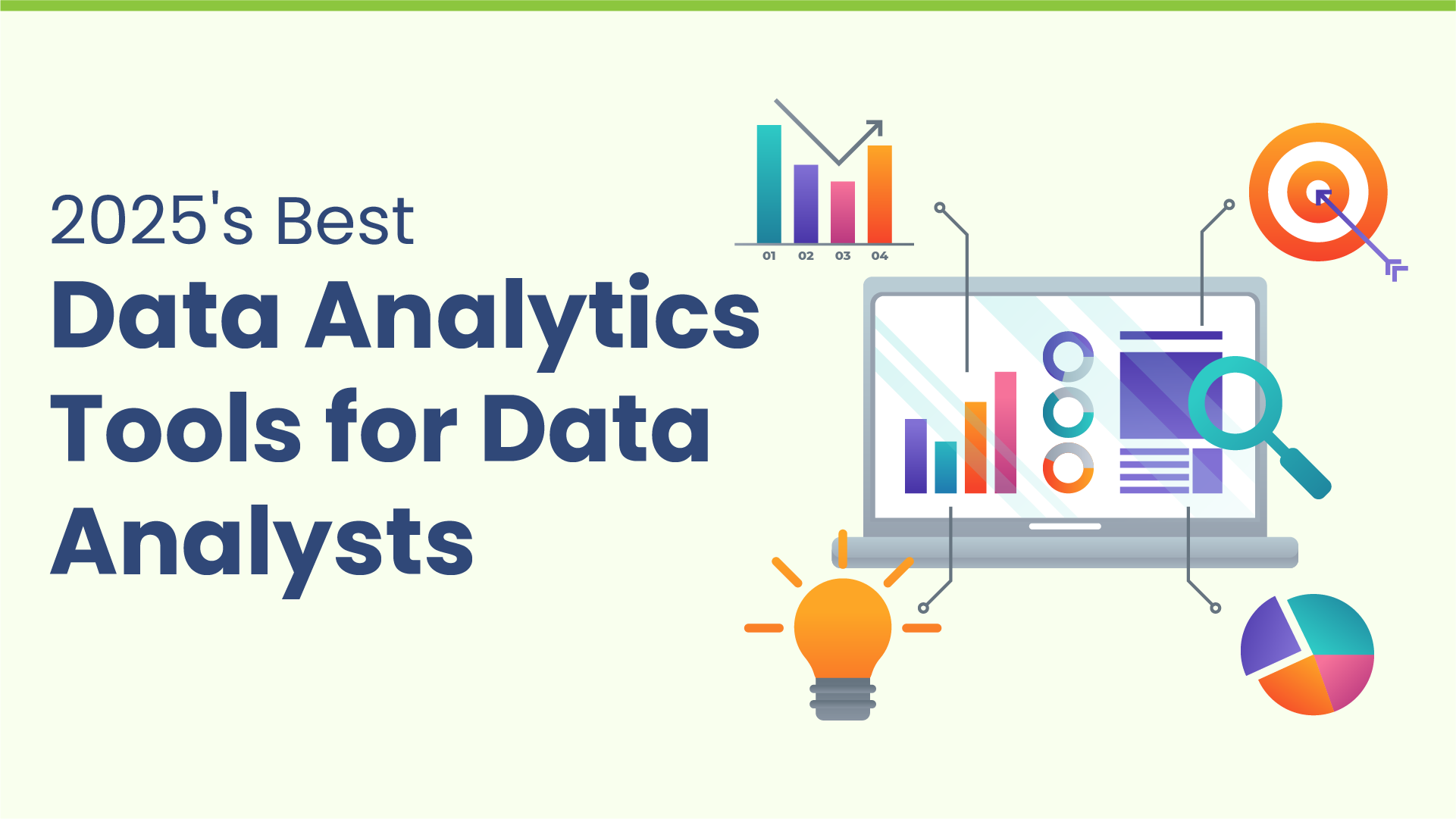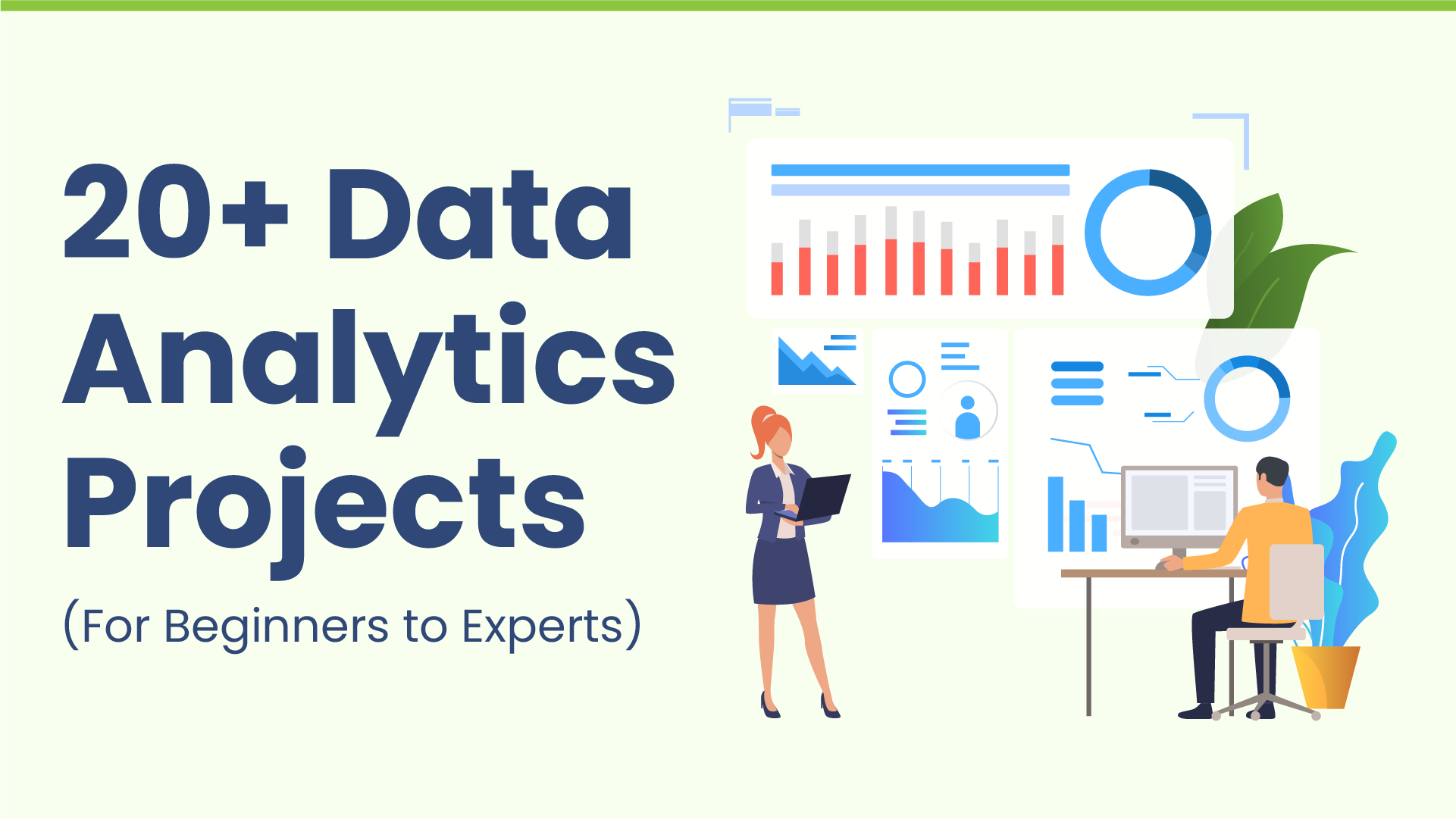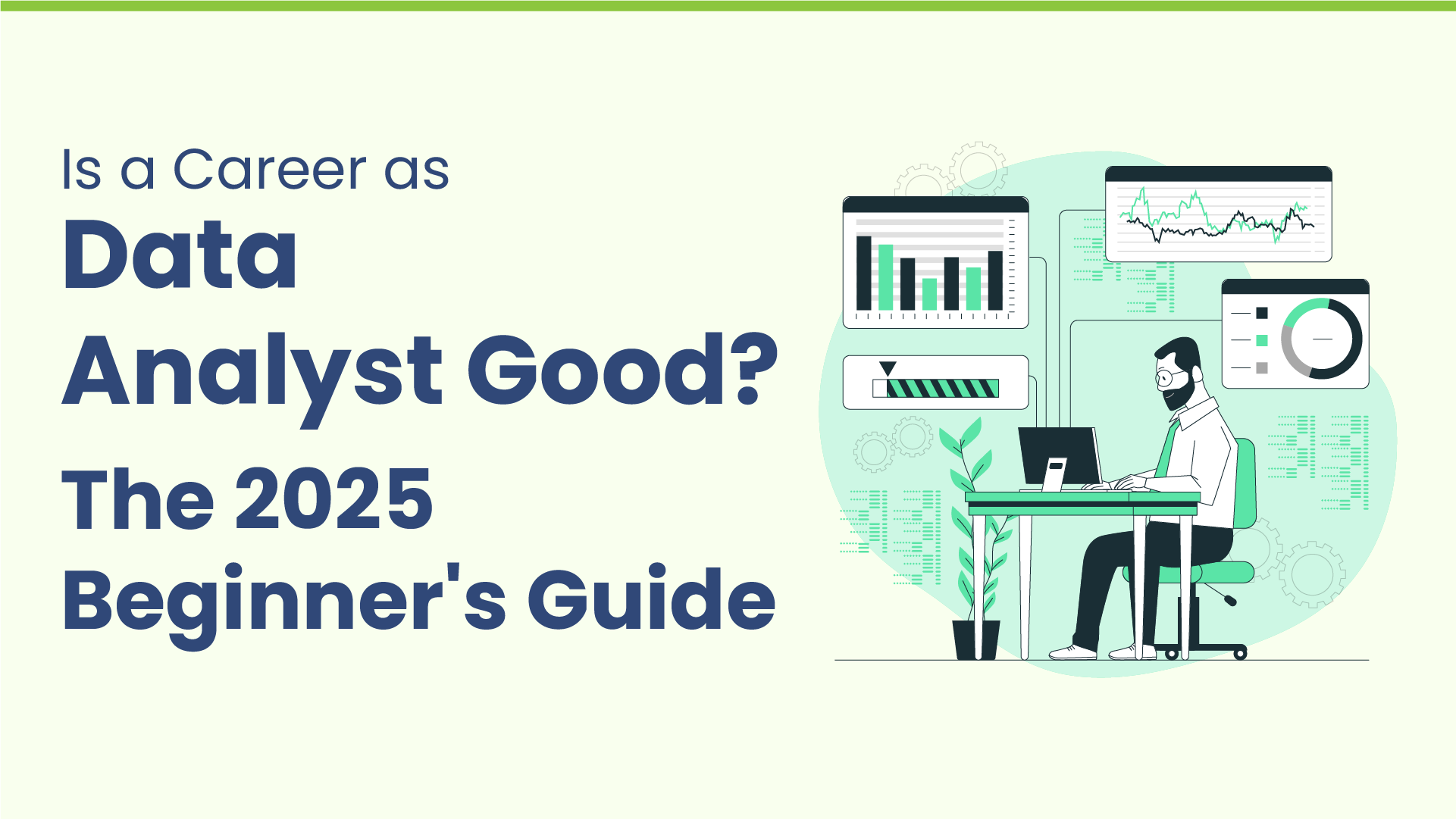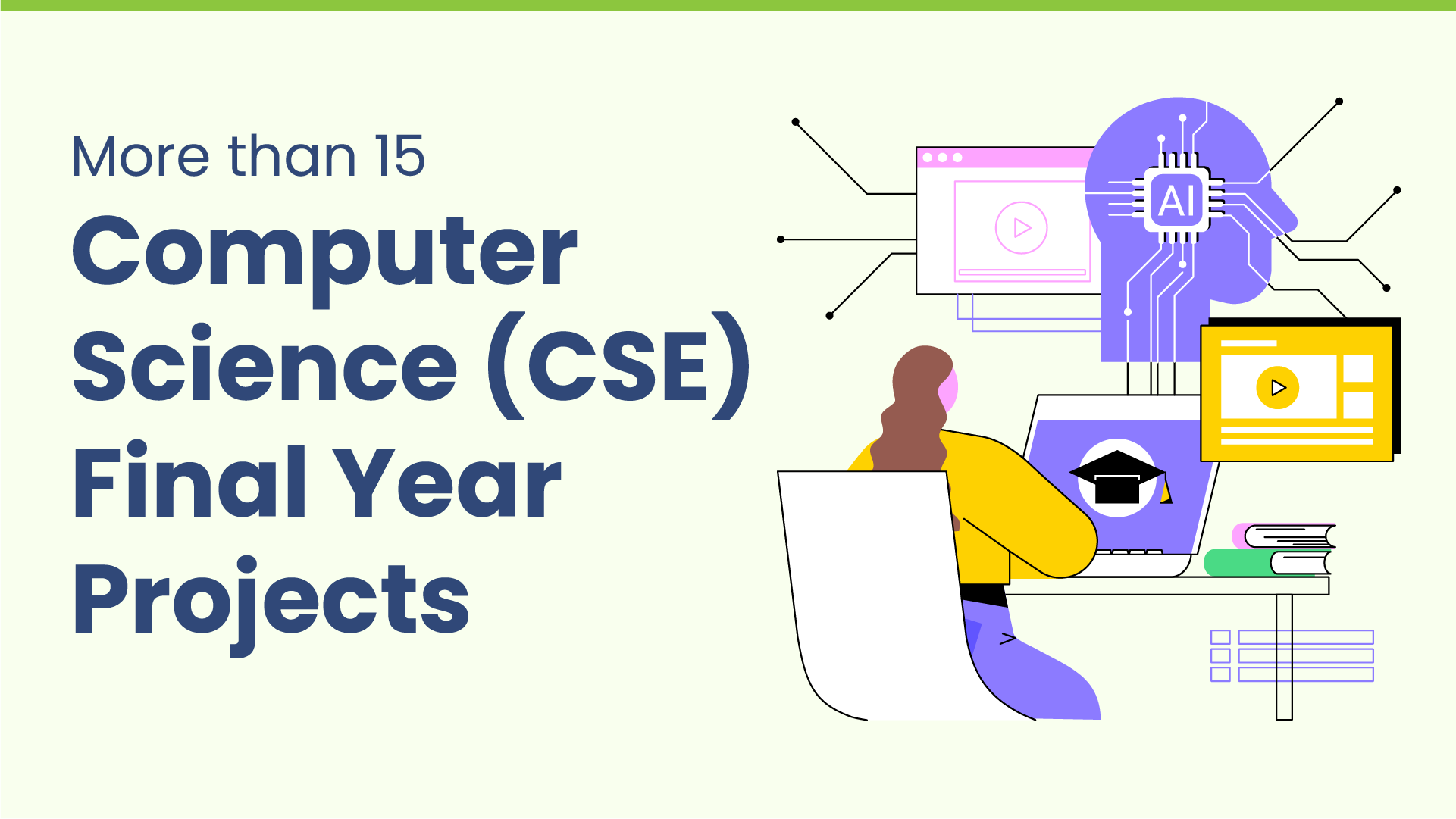
Businesses use data analytics technologies to make sense of vast volumes of information in today’s environment, when data is crucial to decision-making. These technologies aid in data analysis, trend identification, and decision-making for companies. They are made to do intricate computations, manage large databases, and provide visuals.
The kind of data, the complexity of the analysis, and the user all influence which tool is best. While some tools are more sophisticated and appropriate for specialists, others are straightforward and suitable for novices. There is a tool for every requirement, regardless of the size of the spreadsheet or the volume of data you are dealing with.
.We’ll look at some of the most widely used data analytics tools in this blog and how they may help companies harness the potential of their data.
Data analytics: what is it?
Analyzing, organizing, and cleansing data to find valuable information is known as data analytics. This facilitates the process of developing conclusions and making well-informed judgments. Businesses and organizations are able to use raw data to make more informed decisions by transforming it into valuable insights.
What Is the Process of Data Analytics?
These are the steps that make up the data analytics process:
- Data Collection: Data collection involves taking information out of logs, sensors, websites, and databases.
- Data cleaning: To ensure the correctness of the data, this procedure involves eliminating mistakes, duplication, or inconsistencies.
- Data Analysis: Data analysis is the process of examining data to find patterns and trends using statistical models, machine learning, and visualization tools.
- Data Interpretation: Data interpretation is the process by which we must extract those insights and display them in dashboards, reports, or other visual forms.
Data Analytics Types
- Descriptive analytics: Using descriptive analytics, historical data is gathered to determine what transpired.
- Diagnostic Analytics: Predictive analytics forecasts future patterns by analyzing previous data using machine learning. Diagnostic analytics does the same.
- Predictive analytics: Using machine learning to analyze historical data, predictive analytics makes predictions about future trends.
- Predictive Analytics: Prescriptive analytics makes recommendations on how to accomplish specific goals. One example is recommending products that are specific to the behavior of users.
Data analytics tools: what are they?
Software programs that aid in the processing, analysis, and visualization of data are known as data analytics tools. They support scientists, corporate users, and data analysts in deciphering big, complicated information and producing useful insights. Effective data analytics tools enable users to interact with large amounts of data, perform statistical computations, and display data in a graphical format.
The Best Data Analysis Tools for 2025
A detailed description of each data analysis tool’s functions, attributes, and disadvantages can be found below:
1. Tableau
Tableau is one of the most popular applications for business intelligence and data visualization. It provides real-time data insights, dynamic dashboards, and easy-to-understand analytics. This makes it possible for businesses to more easily make data-driven decisions by turning vast amounts of data into a visual representation.
Features and Applications:
- Drag-and-drop: Offers a straightforward, non-coding method for producing visualizations.
- Various Data Source Connectivity: Easily connects to cloud storage, SQL databases, Excel, and a host of other sources.
- Live Analytics: Your reports are always current since you receive real-time data tracking and automated updates.
- Interactive Dashboards and Reports: Sharing dashboards and reports with your team is simple and improves teamwork.
Cons:
- High Cost: Expensive, especially for individual consumers or small enterprises.
- Learning Curve: Because advanced features need training, novices may find them less accessible.
Ideal For:
- Business Intelligence and Dashboarding: Dashboarding and business intelligence are ideal for organizations that want lucid and perceptive methods to display their data.
- Decision-makers and data analysts: Helpful for experts who need dynamic, real-time reporting.
- Companies Looking for Real-Time Data Insights: Ideal for companies that need to keep a close eye on performance and trends.
2. The Power BI
Businesses may share insights and present their data with Microsoft’s Power BI business analytics solution. Data insights may be easily analyzed, visualized, and shared by organizations. Power BI is one of the most widely used tools for data-driven decision-making because of its user-friendly interface and ease of integration with other Microsoft applications.
Features and Applications:
- Seamless Integration: Excellent integration with SQL Server, Azure, and Microsoft Excel.
- AI-Powered Data Analysis: Applies sophisticated analytics by leveraging AI’s capabilities.
- Self-Service Data Preparation: Users may clean and model data on their own without help from IT, thanks to self-service data preparation.
Cons:
- Free Limited Version: Compared to the Pro and Premium subscriptions, the free limited version has fewer features.
- Steep Learning Curve: Novices find it challenging due to advanced features.
Ideal For:
- Data scientists and business analysts: Perfect for experts in analytics and reporting.
- Businesses in Need of AI-Based Business Intelligence: Ideal for businesses that rely on data to make strategic choices.
3. Apache Spark
Apache Spark is an open-source application designed to efficiently and quickly analyze large amounts of data.. Because it can easily manage large datasets, it has gained popularity across a wide range of sectors, including data engineering, machine learning, and real-time analytics. Spark is renowned for being scalable and having the capacity to analyze data in memory, which allows it to operate far more quickly than conventional techniques.
Features and Applications:
- Scalability: Its capacity to analyze massive amounts of data quickly makes it a great choice for real-time analytics.
- Support for Multiple Languages: As a developer or data scientist, you may work with Python, Java, Scala, or R.
- Integration with the Big Data Ecosystem: Easily integrates with various storage platforms, including Hadoop, HDFS, and Apache Kafka.
- Machine Learning and Stream Processing: Supports streaming data analytics and machine learning methods for AI and predictive modeling applications.
- Distributed computing: Effectively manages massive data workloads across dispersed clusters.
Cons:
- High Memory Consumption: Needs a lot of RAM to function at its best, which raises the cost of infrastructure.
- Complex Setup and Maintenance: Configuration, deployment, and monitoring require technical know-how.
Ideal For:
- Big Data Processing and Real-Time Analytics: Real-time analytics and big data processing are perfect for sectors that deal with extensive data pipelines.
- Data Engineers and Developers: Professionals working with distributed computing and ETL procedures might benefit from becoming data engineers and developers.
- Machine Learning at Scale: Enormous-scale machine learning is useful for AI-driven applications that need to process enormous amounts of data quickly.
4. TensorFlow
TensorFlow is a popular open-source machine learning and deep learning framework that was developed by Google. The suggestion provides a scalable and adaptable framework for developing and testing machine learning models. Tensorflow TensorFlow is popular among AI researchers and developers because of its robust computational capabilities and library support.
Features and Applications:
- Support for neural networks: This frees users from becoming bogged down in innumerable settings and parameters so they may concentrate on creating and refining the models.
- Scalability: Manages AI applications of all sizes, from tiny trials to huge business systems.
- Numerous Uses: For speech recognition, picture identification, predictive analysis, and more.
Cons:
- Strong Programming Skills: To utilize Python efficiently, you must have a solid grasp of deep learning ideas and Python programming.
- High Computational Requirements: You’ll need powerful hardware since training intricate deep learning models demands a lot of computational power.
Ideal For:
- AI & Deep Learning Researchers: Researchers studying AI and deep learning: Perfect for individuals investigating cutting-edge machine learning methods.
- Computer Vision, NLP, & Speech Recognition: Speech recognition, computer vision, and natural language processing are all heavily utilized in advanced AI applications.
- Data Scientists & Engineers: Professionals developing extensive machine learning solutions might benefit from the expertise of data scientists and engineers.
TensorFlow continues to be a leading deep learning and AI framework, enabling significant advancements across several sectors.
5. Hadoop
Large volumes of data are processed and stored using this open-source framework in dispersed contexts. The Apache Software Foundation’s Hadoop is a crucial tool for big data analytics, making it simple to handle massive volumes of both organized and unstructured data.
Features and Applications:
- All Data Types Are Supported: Any kind of data, including unstructured, semi-structured, and structured data, can be used.
- Distributed Computing: Distributed computing uses a number of nodes to handle massive datasets efficiently.
- Integrations: Hive, Apache Spark, and other big-data technologies may be integrated with this system.
- Big Data: Used to evaluate massive databases in industries including commerce, healthcare, and finance.
Cons:
- High Latency: You could not immediately receive real-time information due to batch processing’s potential for delays.
- Expertise is Needed: Distributed system setup and management can be challenging and call for sophisticated abilities.
Ideal For:
- Companies Handling Petabytes of Data: Perfect for companies needing scalable processing and storage.
- Big Data Engineers & Analysts: Ideal for experts in distributed computing fields.
- Cost-Aware Companies: A cost-effective way to store and retrieve large amounts of data.
6. R
Data analysis, visualization, and machine learning are all done with R, a statistical computer language. Data visualization and statistical computing are frequently used by statisticians, data scientists, and academics.
Features and Applications:
- Statistical Computing & Visualization: Data modeling, graphical representations, and hypothesis testing are all made possible by statistical computing and visualization.
- Comprehensive Package Gathering: provides more than 100,000 libraries for bioinformatics, machine learning, and statistical analysis.
- Concerning Academic and Business Intelligence: In the fields of predictive analytics and business intelligence as well as at research institutes
Cons:
- Less Fit for Applications at Large Scales: performs worse on big data sets than designs based on Spark or Hadoop.
- Slower Than Python in Some Cases: In certain situations, slower than Python. You may discover that deep learning is not as quick as it might be if you are working with big datasets.
Ideal For:
- Academics and Statisticians: Employed for statistical analysis at research institutions and universities.
- Data Visualization and Predictive Modeling: Professionals with an interest in statistical graphs and machine learning are most equipped for data visualization and predictive modeling.
- Researchers in data science: Perfect for those who want to extract insights from data in a variety of fields, such as healthcare and economics.
7. Python
The primary applications of Python, a general-purpose programming language, include automation, machine learning, and data analysis. Learning it is made easy by its simple syntax and built-in libraries. One of the nicest things about Python is that, in comparison to other programming languages, it frequently requires less lines of code, making it effective and accessible to beginners.
Features and Applications:
- Rich Libraries: For data processing, visualization, and machine learning, Python provides robust libraries such as Pandas, NumPy, Matplotlib, and Scikit-learn.
- Applications for AI and ML: It is now one of the most popular languages for machine learning (ML) and artificial intelligence (AI).
- Database & Cloud Integration: Python is perfect for processing large amounts of data since it easily integrates with databases and cloud services.
- High Scalability: Fit for managing intricate calculations and huge datasets.
Cons:
- Execution Speed: Python is slower than compiled languages like C++ since it is an interpreted language.
- Limitations of Data Visualization: The limitations of data visualization include the fact that, despite its visualization capabilities, Python sometimes requires additional setup and libraries.
Ideal For:
- Data Analysts & ML Engineers: For both structured and unstructured data, data analysts and machine learning engineers are the best.
- Routine tasks, automated data analysis: Automated data analysis routine duties include data mining, data cleansing, web scraping, and automation.
- Beginners: It is a great option for studying data science and programming because of its easily accessible syntax.
8. SAS
A data analytics software package for corporate intelligence, statistical analysis, predictive analytics, and data management is called SAS (Statistical Analysis System). It is employed in sectors that need sophisticated data modeling, especially in governance, healthcare, and finance.
Features and Applications:
- AI-Powered Analytics: Offers deep learning, machine learning, and artificial intelligence models.
- Sector-Specific Applications: extensively used for data-driven decision-making in industries including risk management, marketing, finance, and healthcare.
- Strong Data Security & Compliance: It complies with industry standards, which makes it perfect for managing private information.
Cons:
- High Licensing Costs: Expensive for individuals and small businesses, high licensing costs make it more appropriate for huge corporations.
- Limited Open-Source Support: Compared to open-source technologies like R or Python, SAS has a far smaller development community and fewer free instructional resources.
Ideal For:
- Businesses with Structured Data Requirements: Perfect for companies managing huge, intricate structured databases.
- Financial services and healthcare: often used for risk assessment, fraud detection, and regulatory compliance.
- Businesses Needing High Security in Analytics: Ideal for businesses that require robust data security and control.
9. Qlik Sense
Qlik Sense is a self-service business intelligence and data visualization solution that gives businesses AI-powered insights to help them make better decisions. It is a well-liked option for business analysts due to its robust data analysis features and interactive dashboards.
Features and Applications:
- Dynamic Data Exploration: Users may explore data dynamically without asking questions, thanks to dynamic data exploration.
- Interactive Dashboards and Reports: Interactive reports and dashboards allow you to delve deeply into data and see business trends in great detail.
Cons:
- High Enterprise Costs: Small firms may find it less affordable due to the potentially high cost.
- Requires Advanced Knowledge for Complex Queries: Complex queries need advanced knowledge. Data pooling is simple, but in-depth analysis calls for knowledge.
Ideal For:
- Businesses Looking for AI-Powered Business Intelligence: Perfect for companies that need to make decisions based on data.
- Business analysts: For professionals that need self-service and interactive analytics, this is a suitable option.
10. KNIME
KNIME, which stands for Konstanz Information Miner, is an open-source platform for data analytics, machine learning, and process automation. With its user-friendly drag-and-drop interface, users may design complex data pipelines without any coding knowledge. KNIME is widely used in many sectors for machine learning model training, predictive modeling, and data preparation.
Features and Applications:
- Visual Workflow Builder: Data workflows may be created and managed with Visual Workflow Builder’s no-code interface.
- Smooth integration: compatible with big data technologies such as Hadoop, Spark, R, Python, and SQL.
- Data mining is very powerful: Data mining is incredibly effective and is used in anomaly detection, classification, clustering, and predictive analysis.
- Scalability and Automation: enables seamless operation with bigger data sets through extensions and automates repetitive data procedures.
Cons:
- When processing big datasets, it is sluggish.
- Plugins are needed for more functionality.
Ideal For:
- Machine learning engineers and data scientists
- Businesses in need of process automation
- Open-source flexibility in predictive modeling
How do you pick the top data analytics tool?
Your needs and level of experience will determine which data analytics tool is appropriate for you:
- Business Intelligence & Reporting: Use Tableau or Power BI (excellent for data visualization) if you want interactive dashboards and reporting.
- Big Data Processing: Hadoop and Apache Spark are the finest options for distributed computing when working with large datasets.
- AI & Machine Learning: Select TensorFlow, Python, or KNIME if you are interested in deep learning, automation, or predictive modeling.
- Ease of Use: Power BI, Tableau, and KNIME are easy to use if you’re looking for a low-code or no-code product.
- For developers and data scientists: Python, R, or Spark provide flexibility and customisation if you know how to code.
- Budgetary considerations: Power BI and Tableau provide premium subscriptions with more functionality, whereas Python, KNIME, and Hadoop are free.
Frequently Asked Questions Regarding Data Analytics Tools
1. For what reason are data analytics tools used?
Large amounts of data are analyzed, visualized, and processed using data analytics tools in order to gain insights, make data-driven choices, and/or improve corporate performance.
2. What is the top big data analytics tool?
The best options for efficiently managing large data sets are Hadoop and Apache Spark.
3. Can data analysis be done with Python?
Yes, data analytics can benefit from Python. Data processing and visualization are made possible by its libraries, which include Pandas, Numpy, and Matplotlib.
4. What is the best tool for data analytics?
Consider factors such as the intricacy of your data, usability, affordability, integration with other platforms, and the requirements of your analytics, among other things.
5. What drawbacks do data analytics tools have?
High costs, a challenging learning curve, poor performance, and the need for technical expertise are some drawbacks.
6. Which analytics tools are free to use?
Analytics tools like KNIME, Google Data Studio, R, and Python do, of course, come in free editions.
In conclusion
You may transform raw data into insightful knowledge with the aid of data analytics technologies. There is a tool for any need, whether you require sophisticated machine learning or basic charts. For beginners, start with basic tools like Power BI or Python. For large amounts of data, try Apache Spark or Hadoop. TensorFlow and Python are excellent options if you’re working on AI or machine learning. Your objectives, data volume, and skill level will all influence which tool is ideal for you. You may expand your business and make better judgments by using the appropriate tool.



